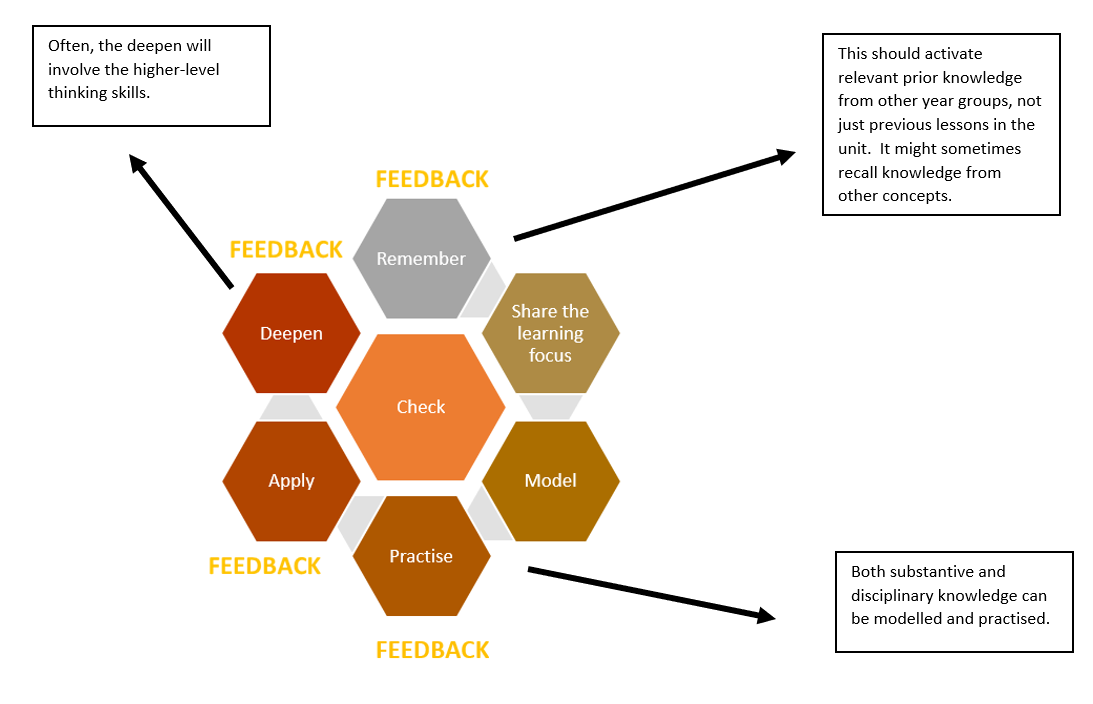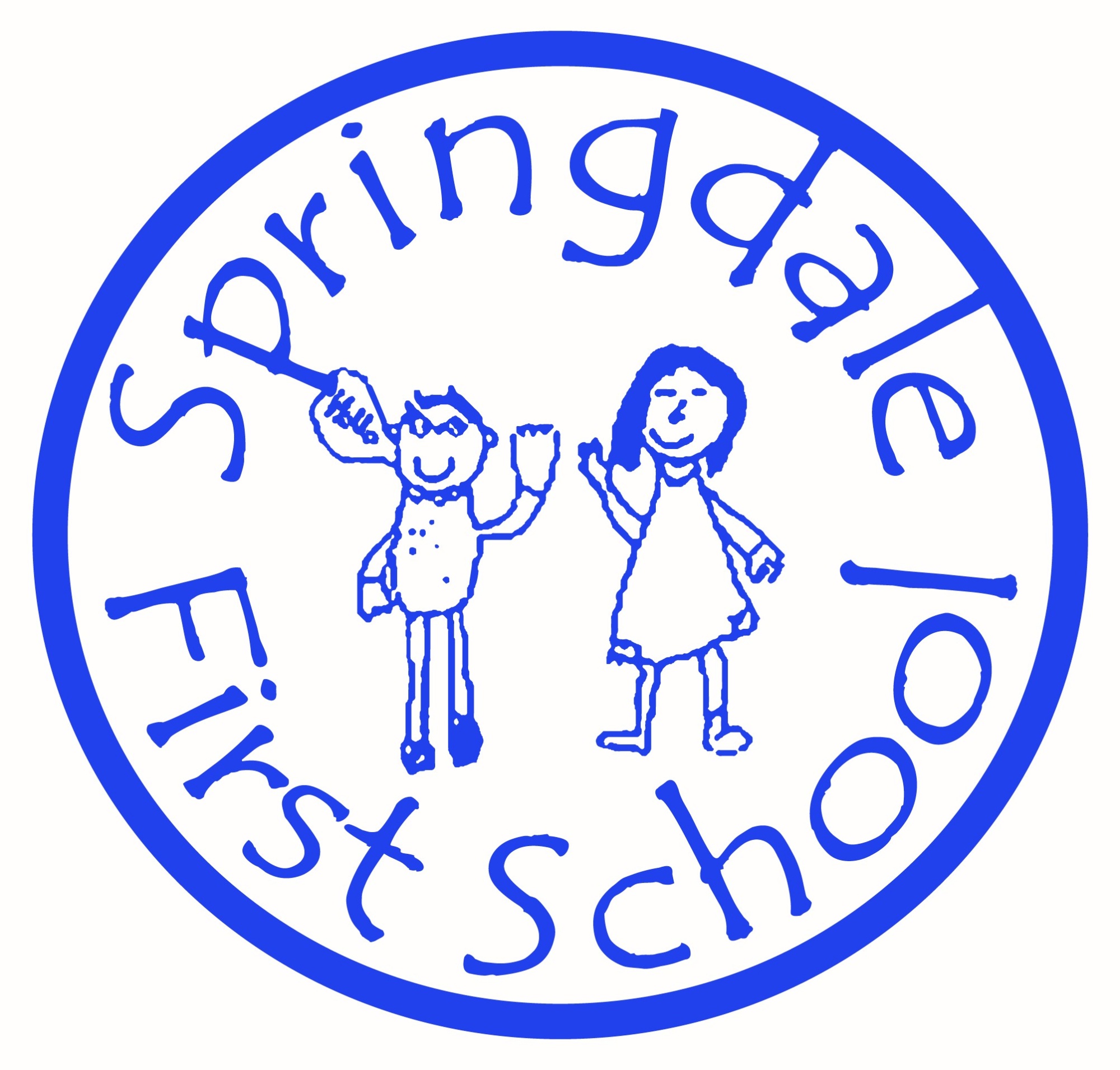Springdale Lesson design / Learning Sequence
At Springdale, we design our lessons using the honeycomb lesson structure below, which is based upon Rosenshine’s Principles of Instruction. We ensure that the children have time to recap prior learning so new learning builds upon what they already know. We endeavour to give all children time to practice and apply new knowledge in a variety of contexts across the curriculum.

Remember: Retrieval practice to retrieve past knowledge. Review to help to remember the key knowledge from the last lesson or other content from previous units that is helpful. Use of AfL here to assess which knowledge has been forgotten. This may take the form of a quiz, picture quiz, keyword match up, picture match up, flashcards, gap fill, tell your partner, etc.
Share the Learning focus (Substantive): New substantive knowledge is instructed in small chunks and is carefully sequenced. Knowledge is broken down into knowledge statements, using ‘I know…’ using dual coding. This knowledge, along with key vocabulary, is then checked
Model (Disciplinary): Disciplinary knowledge and skills are then modelled by the teacher within the context of knowledge already taught. Modelling of this is done one step at a time with continual checks. Instruction is minimal and language is simple. Support understanding of small steps taken- ‘my turn, our turn, your turn’ staged approach
Practice and Apply: Children have the chance to have a go and show their understanding. They experience tasks that help them to apply their substantive knowledge using the disciplinary skill. Evidence in books shows how the children have applied their knowledge. Suitable adaptions have been made to allow all children to experience success and achieve the learning intention.
Deepen: Pupils have the opportunity to deepen the new knowledge, allowing them to show a depth of understanding. These tasks often require a degree of critical thinking where the children need to reason, explain, justify or make connections between previous taught content
Check: Checks are carried out continually through the lesson – some of which could be in books (such as true/false, multiple choice, writing definitions) but much of which will be teacher observation, teaching questioning and children discussing in partners, sharing answers orally or on whiteboards. Teacher should target their checks on children they have identified through AfL that understanding needs strengthening.
Feedback: Providing children on continuous feedback on the new learning ensures that the pupils have taken away the ‘sticky’ bit of knowledge. Identifying where they have been successful and providing scaffolded steps for improvement is key.
